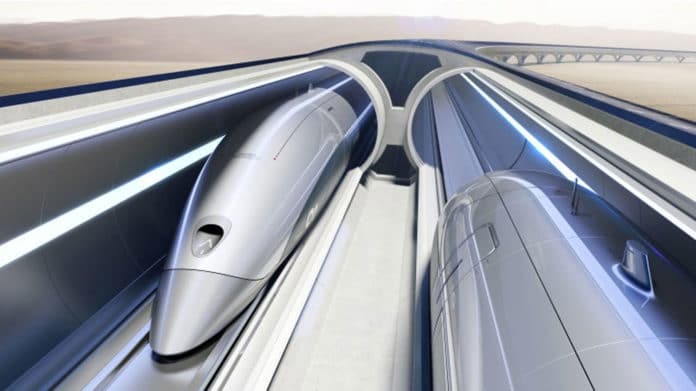Zaha Hadid Architects (ZHA) has signed an agreement with Hyperloop Italia to design a new Hyperloop transportation infrastructure in Italy.
The new project is similar to other Hyperloop proposals; it will transport passengers at very high speed safely, economically, and sustainably. Using passive magnetic levitation technology, Hyperloop propels passenger and cargo capsules through low-pressure tubes to minimize friction, requiring only a fraction of the energy needed to power traditional modes of public transport.
It is powered entirely by renewable sources like solar power with help from regenerative braking tech. This helps Hyperloop Italia infrastructure produce more energy than it consumes. The climate-controlled passenger capsules travel in sealed tubes and remain unaffected by external conditions. Recycled materials will also be used to help build the required infrastructure, including stations.
The capsules measuring 20 meters in length and 2.7 meters in diameter at speeds of up to 1,223 km/h (760 mph), though the actual speed may well end up being significantly slower. The journey by capsule from Milan to the Malpensa airport would therefore take just 10 minutes that otherwise takes 40 minutes.
“We are looking forward to collaborating with Hyperloop Italia, marrying transformative architecture, engineering, and urban planning with the most efficient and sustainable transport network to significantly improve accessibility, connectivity, and well-being in our cities,” said Patrik Schumacher, Principal of ZHA. “We share Hyperloop Italia’s multidisciplinary approach, which combines innovations in design and operational technologies with advances in ecologically sound materials and construction practices, enabling us to deliver future-resilient projects that are spatially inventive, structurally efficient and environmentally sustainable.“
Nothing is known about when Italy’s Hyperloop project will begin construction, nor indeed when it will go into service.
